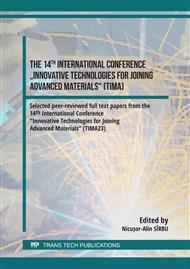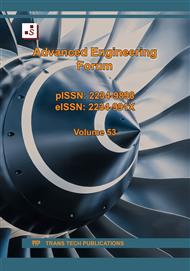p.1
p.11
p.19
p.31
p.39
p.47
p.63
p.83
p.105
Hardness Distribution of Heat-Affected Zones Made by Hardfacing on S690QL and S960QL Steel Plates
Abstract:
In the case of hardfacing the usage of high-strength steels is more and more influential. Several applications can be found in the construction and demolition fields where the dynamic loading occurs beside the abrasive loading. Additionally, the applied steel strength is increased, and S690QL and S960QL base materials are used as base materials for hardfacing. These materials are quenched and tempered which means that the heat cycle of the welding / hardfacing can cause significant changes in the heat-affected zone. The heat cycles of hardfacing have a different effect on the heat-affected zone, than the welding. Additionally, there are sub-zones where 2 or 3 heat cycles cause softening or hardening due to microstructural changes. The properties of the heat-affected subzones basically depend on the heat input, the number of heat cycles, and the base material. In this research, the hardness of heat-affected zones was investigated in the case of S690QL and S960QL base material. Hardfacing was made by different heat inputs in the case of both materials and after comparison, differences are written. One butter layer and 3 hardfacing layers were made in each case by robotic MIG/MAG welding. Several heat-affected subzones are determined, so for exact results hardness maps were made in all cases by hundreds of hardness tests. These maps show perfectly the differences between the hardness of the zones and the differences between the dimensions of heat-affected zones. There are significant differences in the multiple times heated subzones according to heat input. In the case of S690QL, the hardening is more significant than the softening in the heat-affected zone, the S960QL shows the opposite reaction to the heat cycles of hardfacing. On the hardness maps, the differences between the hardfacing layers are almost visible, and it shows big drops in the hardness of these layers in all cases.
Info:
Periodical:
Pages:
1-10
Citation:
Online since:
December 2024
Authors:
Price:
Сopyright:
© 2024 Trans Tech Publications Ltd. All Rights Reserved
Share:
Citation:



